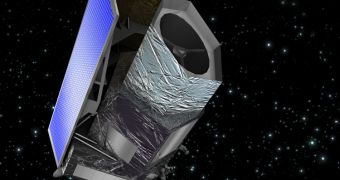On June 20, the European Space Agency's (ESA) Science Program Committee (SPC) gave the go-ahead for the Euclid mission, an endeavor to shed more light on the dark side of the Universe.
The spacecraft will be focused on studying the dark side of the Cosmos, as in dark matter and dark energy. These are quantities introduced in the Big Bang model in order to explain observations, and include them in existing cosmological models.
Dark matter is estimated to make up for 23 percent of the cosmic mass-energy budget, while normal (baryonic) matter accounts for just 4.6 percent. The former only interacts with the latter through the force of gravity, since experts believe it is made up of Weakly-Interacting Massive Particles (WIMP).
Dark energy is the force that pushes large-scale structures in the Universe apart from each other at an ever-accelerating pace. It represents the dominant quantity in the Universe, accounting for 72 percent of its mass-energy budget.
It will be the purpose of the Euclid mission to study both dark matter and dark energy, and provide conclusive data on their nature, constituents, and interaction patterns. For quite some time, it was unclear whether the mission will be approved at all, on account of budget constraints.
The decision the SPC took on June 20 guarantees that the spacecraft will be developed properly, and launched by 2020. Euclid is one of the first two medium-class missions of the Cosmic Vision 2015–25 plan, alongside the Solar Orbiter.
The SPC also signed a number of documents between ESA and the EU Member States involved in the project, which formalize the funding agreements for the two instruments that will go on the spacecraft.
Euclid will feature a camera that will operate in optical wavelengths, as well as a near-infrared camera/spectrometer. The two will be tied by a large, distributed processing system. The latter will be responsible for processing the data in near real time.
The Euclid Consortium, the collaboration responsible for building the instruments and analyzing the resulting data, features some 1,000 investigators from 100 institutes.
“This formal adoption of the mission is a major milestone for a large scientific community, their funding agencies and also for European industry,” explains the ESA Director of Science and Robotic Exploration, Alvaro Giménez Cañete.
“It took a lot of hard work to get this far, but we now have a solid blueprint for a feasible space telescope which enables very accurate measurements that will bring to light the nature of dark energy,” adds the leader of the Euclid Consortium, Yannick Mellier.

 14 DAY TRIAL //
14 DAY TRIAL //